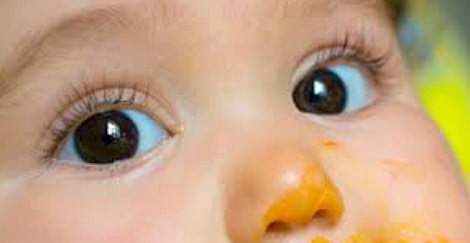
To investigate infant’s eye movements, the researchers used eye-tracking technology. One-hundred six-month-old infants participated in the study. The infants observed a static image while the researchers monitored their gaze.
Infants who were later diagnosed with ASD moved their eyes more than infants who were not diagnosed with ASD. These typically developing infants tended to move their eyes approximately two times per second. The babies later diagnosed with ASD moved their eyes three times per second. This is a small, but significant difference. The researchers also observed that infants with a high risk of having ASD showed less variation in their eye movements compared to the low-risk group.
The researchers suggest that increased eye movement could be related to learning problems. Rapid eye movement may also be an early indicator of behavioral difficulties stemming from different ways of processing visual information. Adults with ASD sometimes process visual information more quickly than others. The increased eye movement rate of infants who are later diagnosed with ASD may be a manifestation of the same phenomenon.
The findings could give clinicians an early test for identifying infants at-risk for ASD. However, the researchers caution that eye movement alone is not a reliable indicator of autism.
Previous news in autism:



 © 2025 Unyte Health US Inc.
© 2025 Unyte Health US Inc.